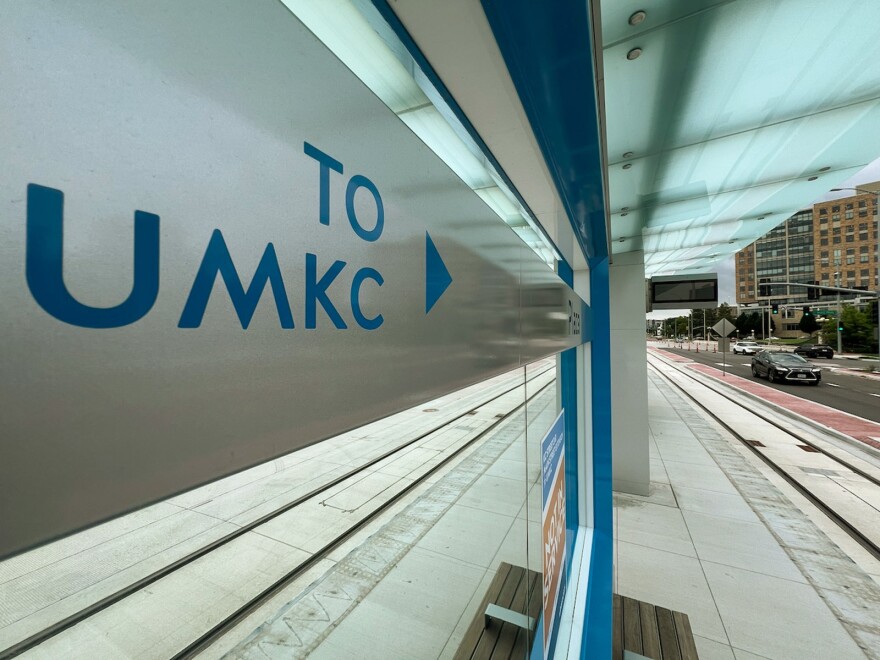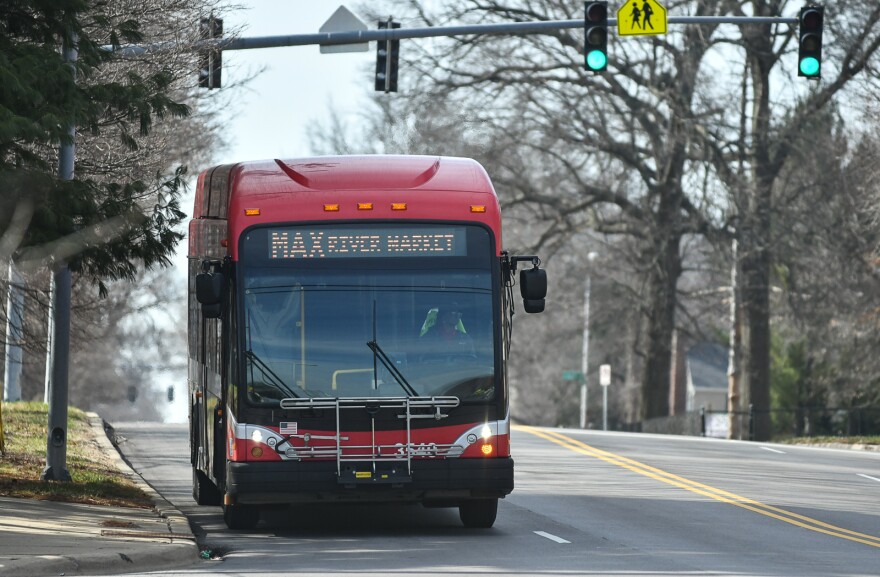In just over two weeks, Kansas Citians will be able to ride the KC Streetcar all the way from the River Market to 51st Street near the University of Missouri-Kansas City.
That new streetcar extension will also spell the end of one of Kansas City’s most popular bus lines.
The Kansas City Area Transportation Authority will discontinue its Main Max bus line on Oct. 19, to avoid duplication with the new Main Street route — which will run a similar path when it opens Oct. 24.
AJ Farris, the director of planning and scheduling at KCATA, said the changes are meant to take full advantage of the streetcar, which has high frequency and long service hours. The streetcar will run from 5 a.m. to midnight Sundays through Thursdays, and from 5 a.m. to 1 a.m. Fridays and Saturdays.
“We now have this amazing spine of a transit system that goes through the heart of downtown and into the South Plaza area, terminating at UMKC,” Farris said. “This allows us to free up resources to do more with our bus system and access more areas with the resources that were previously used on the Main Max.”
The Main Max is one of KCATA’s most popular routes, and had an average daily ridership of more than 2,600 in August of this year.
During the few days between the Main Max’s end and the extension’s opening, riders can take temporary bus service between the Plaza and downtown.

A new bus route
Because the Main Max travels further into south Kansas City than the streetcar will, the KCATA will also launch a new north-south route. The 50 Wornall-Brookside will run every 20 minutes, and take riders from the Plaza Transit Center on Brookside Boulevard and Wornall Road, and then east on 75th Street to the Troost Transit Center.
That new route will open Oct. 19, the same day service on the Main Max ends.
Farris said eliminating the Main Max, starting the 50 and changing other bus routes to connect with the streetcar will help make all public transit in Kansas City more accessible.
“If people used to think that the streetcar was a tourist-only route, I would challenge them to now go use the system, use the bus to connect to the streetcar, or use the streetcar to connect to the bus and just see how many more options you have as far as service in Kansas City goes," Farris said.
Other route changes
The KCATA will also change three other routes — the 24 Independence, 35 35th Street and 47 Broadway — to help riders connect to the streetcar.
The downtown portion of the 24 route, which runs east into Independence, will now travel north-south along Main Street instead of Grand Boulevard. The 24 is one of KCATA’s highest ridership routes with the highest frequencies.
Route 35 will change south of Armour Boulevard. Instead of traveling along Main Street to Westport Road and Roanoke Parkway, it will go to the Plaza along Broadway Boulevard.

Farris said this change also compensates for the loss of the Main Max, which has been under a “permanent reroute” for the past few years. During streetcar construction on Main Street, the Max ran along Broadway Boulevard for a large portion. Because riders have already adjusted their behavior to compensate, the 35 will now take over that route.
“It's going to be providing that service along Broadway Boulevard, especially in that Plaza area by Saint Luke's,” Farris said. “The 35 is going to cover that base for people who were used to taking the Main Max along Broadway.”
The 47 is one of KCATA’s longest routes, stretching from the stadium complex to downtown. Instead of traveling downtown along Broadway, the 47 will continue east along Westport Road and Roanoke Road to the University of Kansas Hospital.
The changes to the 47 will pick up some of the service cuts on the 35 and clean up what Farris called its previously “funny design.”
Farris said the KCATA will seek public input on how the changes are affecting riders and if people like them. The transit agency will also have staff on buses and at bus stops starting Thursday, Oct. 9 to make people aware of the route changes.
Affected stops will also have rider alerts posted.
“We have a significant amount of public input and engagement planned for after these changes are made, to see how these changes are affecting people and see if there are ways that we can tweak it to make it really work for the public moving forward,” Farris said.






